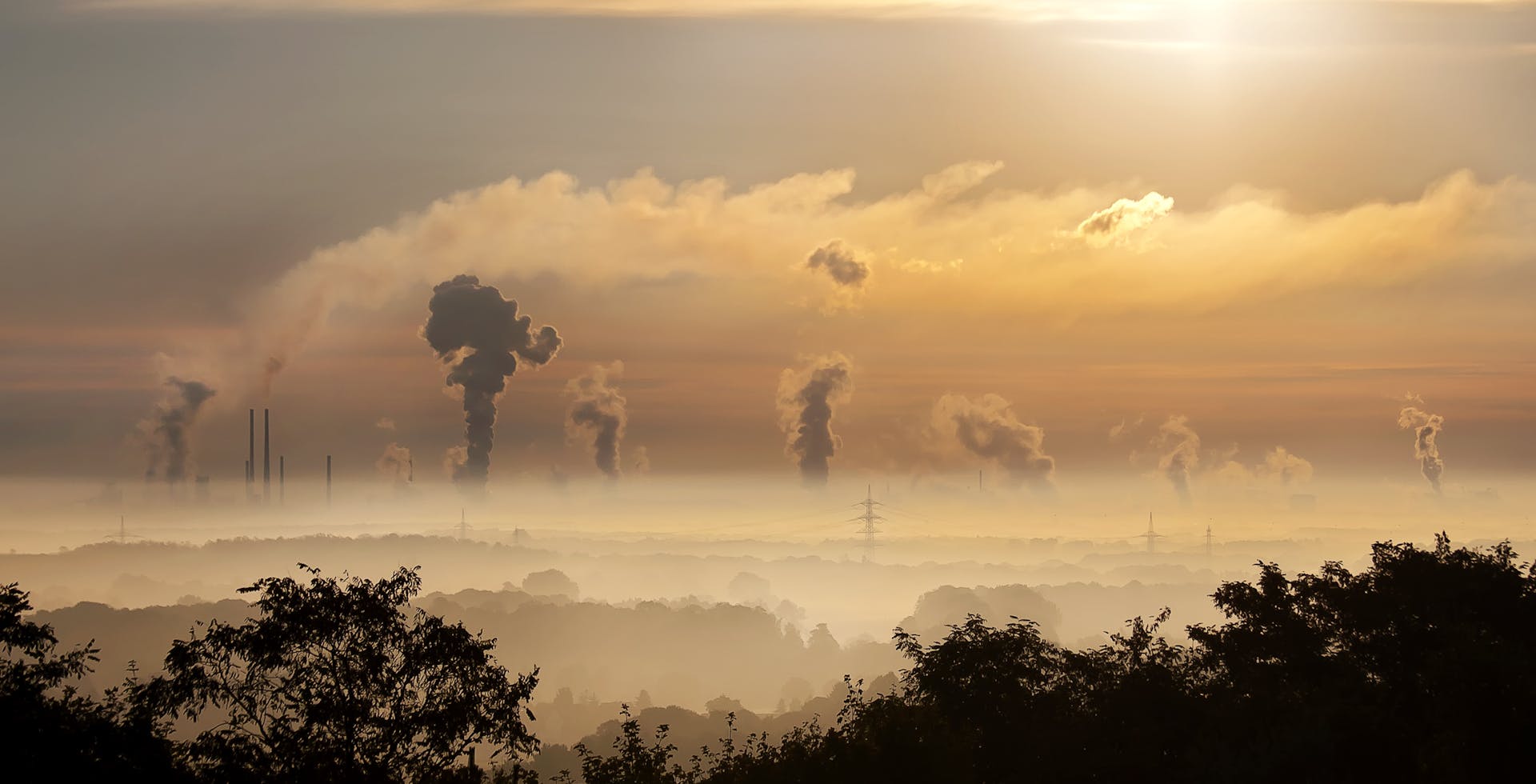
The carbon credit market is a complex system, but it's essential to understand its basics. The Kyoto Protocol established the Clean Development Mechanism (CDM), which allows developed countries to invest in emission-reducing projects in developing countries.
Carbon credits are created when these projects reduce greenhouse gas emissions. For example, a wind farm in China can generate credits by producing electricity without burning fossil fuels. One credit is equivalent to one ton of CO2 reduced.
The carbon credit market has grown significantly since its inception. In 2005, the market was worth around $10 billion, but by 2015, it had grown to over $100 billion. This growth is a testament to the increasing demand for sustainable practices.
The players in the carbon credit market are diverse, including governments, corporations, and non-profit organizations. They all have different motivations and goals, which can influence the market's dynamics.
You might like: Marriott Elite Night Credits
What Are Carbon Credits
Carbon credits are essentially permits that allow companies or individuals to emit a certain amount of greenhouse gases, such as carbon dioxide, based on the level of emissions they would have produced if they were operating under stricter regulations.
These credits are created through projects that reduce emissions or remove carbon dioxide from the atmosphere, like reforestation efforts or renewable energy projects.
One credit is equivalent to one ton of carbon dioxide that is reduced or removed from the atmosphere.
Carbon credits can be traded on a voluntary market or a compliance market, with the latter being required by governments to meet their emissions targets.
The value of a carbon credit can vary greatly depending on the project it's associated with and the demand for credits in the market.
Carbon credits can be used to offset emissions from activities like flying or driving, allowing individuals to compensate for their emissions by investing in projects that reduce greenhouse gases.
For more insights, see: Carbon Credits
How They Work
Carbon credits are issued by national or international governmental organizations, such as the United Nations, which allows countries to issue credits based on emissions targets. The number of credits issued each year is typically based on these targets.
The Kyoto and Paris agreements created the first international carbon markets, and the United States has its own carbon market in California, which issues credits to residents for gas and electricity consumption. California's carbon market is a great example of how a state can take the lead in reducing emissions.
Companies are incentivized to reduce their emissions to stay under their caps, which are set by regulators as part of a cap-and-trade program. This program sets a limit on carbon emissions, and the cap slowly decreases over time, making it harder for businesses to stay within that cap.
A ton of CO2e is equivalent to driving your average 22 mpg car from New York to Las Vegas. To put that in perspective, the average American generates 16 tons of CO2e a year through everyday activities like driving, shopping, and using electricity and gas at home.
Carbon credits can be sold on a carbon exchange or marketplace, and companies that purchase too many credits can sell the excess. This system is commonly called a cap-and-trade program, which is used in countries like Canada, the EU, the UK, China, New Zealand, Japan, and South Korea.
Here's a breakdown of how carbon credits and offsets are created:
- Carbon credits are issued by national or international governmental organizations.
- Carbon offsets are created by organizations that reduce the amount of carbon already in the atmosphere, such as by planting more trees or investing in renewable energy.
- One carbon offset = one metric ton of carbon or other greenhouse gas (GHG).
- A ton of CO2 is equivalent to 500 fire extinguishers.
U.S. Carbon Credit Programs
The U.S. has been regulating airborne emissions since the passage of the U.S. Clean Air Act of 1990, which is credited as the world's first cap-and-trade program.
Cap-and-trade programs are designed to reduce emissions, and the U.S. Clean Air Act is a prime example of their effectiveness. The program has substantially reduced emissions of sulfur dioxide from coal-fired power plants, which was a major cause of acid rain in the 1980s.
In the Northeast, 11 states have joined forces to reduce greenhouse gases through the Regional Greenhouse Gas Initiative (RGGI). This program is part of a larger effort to address climate change.
The Inflation Reduction Act, signed into law in 2022, aims to reduce carbon emissions and rewards companies that store or use greenhouse gases in sustainable ways. The act includes expanded tax credits for carbon capture and storage.
You might enjoy: Should I Clean My Car before Trade In?
U.S
In the United States, cap-and-trade programs are a topic of debate, but 13 states have taken a different approach to reducing greenhouse gases.
The Center for Climate and Energy Solutions reports that these states have adopted market-based solutions to address the issue.
Thirteen states in the US have implemented market-based approaches to reduce greenhouse gases.
Eleven of these states are part of the Northeast region, working together through the Regional Greenhouse Gas Initiative (RGGI) to tackle the problem.
For your interest: Exploring Credit Inquiry Solutions for Smarter Financial Decisions
U.S. Clean Air Act
The U.S. Clean Air Act is a landmark piece of legislation that has been regulating airborne emissions since its passage in 1990. It's credited as the world's first cap-and-trade program, which is a market-based approach to reducing pollution.
The program has been successful in reducing emissions of sulfur dioxide from coal-fired power plants, which was a major contributor to acid rain in the 1980s. The Environmental Defense Fund has praised the program for its effectiveness.
The U.S. Clean Air Act has set a precedent for other countries and states to follow, including California, which initiated its own cap-and-trade program in 2013.
Inflation Reduction Act
The Inflation Reduction Act is a significant piece of legislation that aims to reduce carbon emissions and fight inflation.
Signed into law on August 16, 2022, it provides a major overhaul of the carbon credit system.
The legislation rewards high-emitting companies that store their greenhouse gases underground or use them to build other products.
These rewards include significantly expanded tax credits, increasing from $50 to $85 for each metric ton of captured carbon stored underground.
It also increases the tax credit from $35 to $60 for each ton of captured carbon used in other manufacturing processes or for oil recovery.
These more generous credits are hoped to convince investors to make a bigger effort at capturing carbon.
The previous tax incentive, known as 45Q, was criticized for only paying enough to make easy carbon capture projects worth pursuing.
Who Can Sell
Anyone can sell carbon offsets, but only businesses and governments can sell carbon credits. Carbon credits are sold by governments to businesses, and can be resold on the regulated carbon credit market.
To sell carbon offsets, you need to participate in a carbon registry or sequestration program. This can include landowners who enroll their land into a project, such as reforestation or aforestation, and use the funds to pay for their operations.
Landowners can also sell carbon offsets by capturing and storing emissions using carbon farming and carbon sequestration processes. This involves implementing practices that remove CO2 from the atmosphere by converting the gas into organic matter within the soil and eventually into plants.
Farmers, ranchers, and landowners can produce and sell carbon offsets in countless ways, including returning biomass to the soil as mulch, using conservation tillage or no-tillage practices, and planting cover crops.
Here are some examples of practices that typically qualify as offset-producing projects:
- Returning biomass to the soil as mulch after harvest instead of removing or burning.
- Using conservation tillage or no-tillage practices.
- Using nutrient management and precision farming.
- Planting cover crops during the off-season.
- Promoting forest regrowth.
- Returning degraded soils to their natural state.
- Rotating crops.
- Switching to alternate fuel types.
- Altering manure management and changing feeding schedules.
To sell carbon offsets, you'll need to have land maps available, document your management practices, and obtain a signed contract between yourself and those purchasing/paying for the carbon credits.
Why Companies Buy
Companies buy carbon credits to legally emit more GHGs. They also purchase carbon offsets to have a "net-zero carbon emission" rate.
There's growing public and institutional pressure for companies to make net-zero commitments. This is due to the urgency of the climate crisis.
Reductions in emissions are possible through changes in business practices. However, a wholesale elimination of emissions isn't feasible for many firms.
Carbon offsets fund emission-reduction activities like tree-planting or nature conservation. This is in lieu of completely eliminating their own emissions.
Global Carbon Credit Initiatives
The Kyoto Protocol was a 1997 agreement that aimed to reduce worldwide carbon emissions by setting binding emission reduction targets for countries that signed it.
Industrialized countries, known as Annex 1, operated in their own emissions trading market, where they could sell surplus credits to countries that didn't meet their targets.
A separate Clean Development Mechanism for developing countries issued Certified Emission Reduction (CER) carbon credits, which could be traded in a separate market.
The Kyoto Protocol was revised in 2012 with the Doha Amendment, which was ratified by 147 member nations as of October 2020.
The Glasgow COP26 Climate Change Summit led to a deal that allowed nearly 200 countries to implement Article 6 of the 2015 Paris Agreement, which enables nations to purchase offset credits representing emission reductions by other countries.
Brazil planned to be a major trader of carbon credits, aiming to spur investment in initiatives and technology that protect forests and build renewable energy infrastructure.
The Glasgow accord also included provisions to reduce overall global emissions, such as canceling 2% of total credits and placing 5% of revenues generated from offsets in an adaptation fund for developing countries.
Carbon Credit Market Structure
The carbon credit market structure is a complex system, but it's essential to understand it if you want to trade carbon credits effectively. There are two types of carbon markets: compliance and voluntary.
Compliance markets are mandatory, meaning governments and regulatory bodies require companies to participate. In these markets, companies can buy and sell carbon credits to meet their emissions reduction targets. For example, the 2021 Emissions Gap Report found that full use of market mechanisms can enable cost savings in the order of 40-60% in 2030.
Voluntary markets, on the other hand, are optional, and companies can participate voluntarily to offset their emissions. This type of market is becoming increasingly popular, with many companies seeking to reduce their carbon footprint.
Carbon credits can be created through various means, such as reforestation, renewable energy projects, or energy efficiency measures. The carbon marketplace is where these credits are bought and sold.
Here's a breakdown of the two significant markets in the carbon marketplace:
In regulated markets, companies are issued a certain number of carbon credits each year, and they can buy or sell these credits to meet their emissions reduction targets. In voluntary markets, companies can buy credits to offset their emissions, but it's not mandatory.
The demand for carbon credits is expected to increase significantly in the coming years, with some projections suggesting a 15x or more increase by 2030 and a factor of up to 100x by 2050. This growth is driven by the need for companies and individuals to reduce their carbon footprint and meet their emissions reduction targets.
Carbon Credit Value and Distribution
Carbon credits can be sold on the carbon credit market to other companies, with the money going to the company that sold the credit. This can be a lucrative business, with over $10 billion in carbon offsets traded on the VCM in 2023.
The value of a carbon credit can vary significantly, with prices in California expected to average $42 per metric ton in 2024 and $76 per ton in Europe. This means that the price paid for carbon offsets can also swing due to changes in regulations, policy, and demand for offsets.
The price paid for carbon offsets can also depend on project quality, issuance year, verifiability, additional benefits created by the carbon offset, and other factors. For example, forestry and conservation projects can be worth less than $1 per carbon ton offset, while renewable energy projects can be worth more than $50.
In some cases, farmers can earn significant profits from carbon sequestration, such as Indigo Agriculture, which guarantees farmers $15 per tonne of CO2 that they sequester.
Money Distribution
The money from carbon credits goes directly to the company that sold the credit.
Carbon credits are issued to companies by governments, so they're the ones who get to decide how to use the money they receive from selling these credits.
The company can use this money as they see fit, whether it's to offset their own emissions or invest in other projects.
Money spent on carbon offsets, on the other hand, goes to the project or entity sponsoring the carbon offset.
This money is used to fund projects that aim to reduce greenhouse gas emissions, such as reforestation or renewable energy initiatives.
What Are They Worth?
Carbon credits can be worth anywhere from less than $1 to over $50 per ton, depending on factors like project quality, issuance year, and additional benefits created.
The average price paid for a tonne of carbon removed from the atmosphere in 2023 was $4, based on over $10 billion in carbon offsets traded on the VCM.
In some cases, a single tree can store up to 5 tonnes of CO2 over 40 years, generating $12,500 in revenue at $10/tonne carbon.
If the value of carbon rises to $50/tonne, that single tree could be worth more than $1,000 a year.
A 1,000-acre wheat farm that removes 1 tonne per acre can earn up to 1,000 carbon credits, and $15,000 profit annually, if paid $15 per tonne of carbon removed.
Here's a breakdown of the estimated revenue from planting different numbers of urban shade trees:
Some carbon sequestration projects can earn farmers up to $15,000 profit annually, depending on how they sequester the carbon.
Carbon Credit Market Analysis
The carbon credit market is a growing industry that allows companies to trade carbon credits, which represent a reduction in greenhouse gas emissions. The market is expected to expand dramatically in the next decade, with the demand for carbon credits potentially increasing by 15x or more by 2030.
Carbon credits were devised as a mechanism to reduce greenhouse gas emissions, and companies receive a set number of credits that decline over time. They can sell any excess credits to another company.
The two types of carbon markets are compliance and voluntary markets. Compliance markets, such as national or regional emissions trading schemes, require participants to act in response to an obligation established by a regulatory body. Voluntary carbon markets, on the other hand, allow non-state actors to voluntarily offset their emissions.
According to the 2021 Emissions Gap Report, full use of market mechanisms can enable cost savings in the order of 40-60% in 2030. The report highlights the importance of carbon markets in achieving climate targets and implementing climate actions cost-effectively.
Here are some key statistics on the carbon credit market:
The carbon credit market is expected to grow significantly in the next decade, with the potential for massive returns on investment. As a farmer, rancher, or landowner, now is the time to begin producing carbon offsets using your land.
The carbon credit market provides a monetary incentive for companies to reduce their carbon emissions, and it's based on the cap-and-trade model that was used to reduce sulfur pollution in the 1990s.
Carbon Credit Market Basics
Carbon credit markets are a way for governments and non-state actors to trade greenhouse gas emission credits, aiming to achieve climate targets cost-effectively. Carbon markets are categorized into compliance and voluntary markets.
Compliance markets, such as national or regional emissions trading schemes, are mandatory, while voluntary markets allow non-state actors to offset their emissions voluntarily. The 2021 Emissions Gap Report found that full use of market mechanisms can enable cost savings in the order of 40-60% in 2030.
There are two types of global carbon markets: voluntary and compliance. Voluntary markets allow companies, cities, or regions to offset their emissions, while compliance markets are mandatory and governed by regulatory bodies.
Carbon credits and offsets are created through various projects, such as reforestation or renewable energy projects. The carbon marketplace is a platform where carbon credits and offsets are bought and sold.
Here are the key differences between carbon credits and offsets:
The size of the carbon offset market is growing, with the total volume of carbon offsets used by entities to compensate for their CO2 emissions hitting almost 180 millions MtCO2e in 2023. The market size is projected to grow between $5 billion and $30 billion at the low end and more than $50 billion at the high end by 2030.
Curious to learn more? Check out: Measure Particle Size Carbon Black
Frequently Asked Questions
How can carbon credits be traded?
Carbon credits can be traded on a carbon exchange or marketplace, where companies can buy or sell excess credits. This trading system helps companies manage their emissions and reduce costs.
Is carbon credit trading profitable?
Yes, carbon credit trading can be profitable, with potential annual profits ranging from $15,000 to potentially much more per 1,000 acres of land. The profitability of carbon credit trading depends on various factors, including the carbon sequestration method and the land's carbon removal capacity.
How do I buy carbon credits?
You can buy carbon credits by directly investing in a crediting project or by contracting with a project developer for delivery of credits as they are issued. This can be a valuable step in reducing your carbon footprint and supporting sustainable projects.
Can anyone trade carbon credits?
Yes, anyone can purchase and trade carbon credits, but the market is primarily driven by entities participating in emissions reduction projects.
Sources
- https://www.unep.org/topics/climate-action/climate-finance/carbon-markets
- https://www.investopedia.com/terms/c/carbon_credit.asp
- https://carboncredits.com/the-ultimate-guide-to-understanding-carbon-credits/
- https://carboncredits.com/how-to-make-money-producing-and-selling-carbon-offsets/
- https://offsetguide.org/understanding-carbon-offsets/how-to-acquire-carbon-offset-credits/
Featured Images: pexels.com


